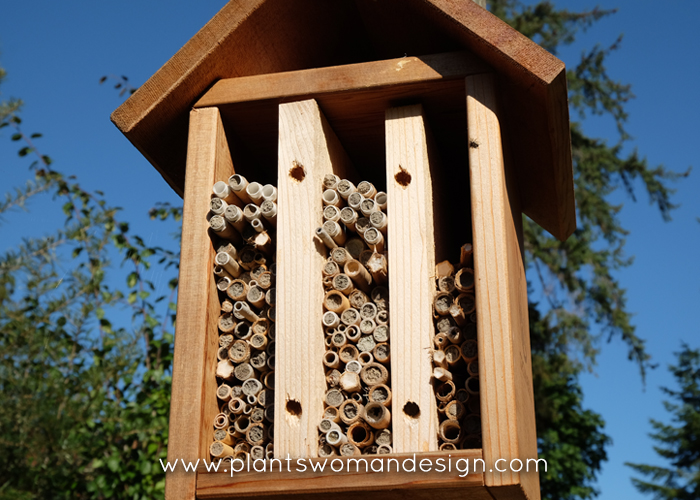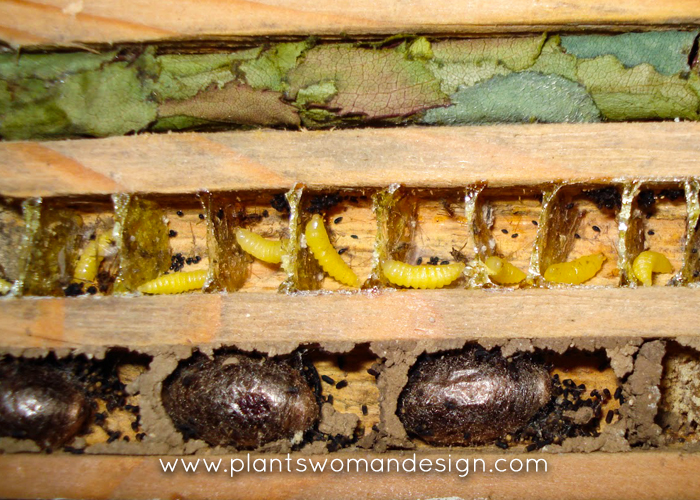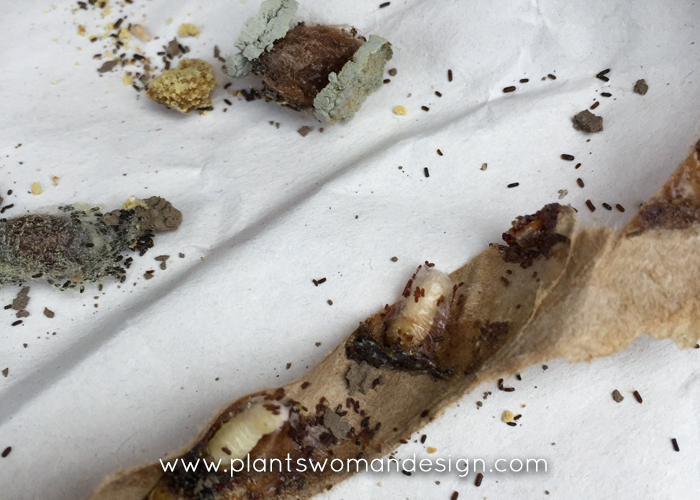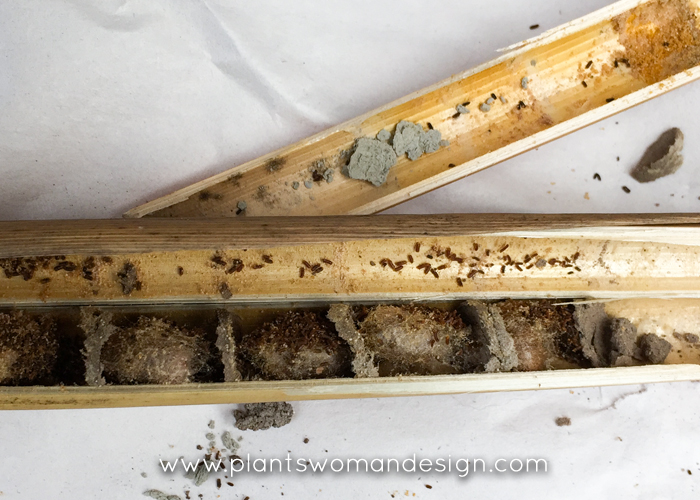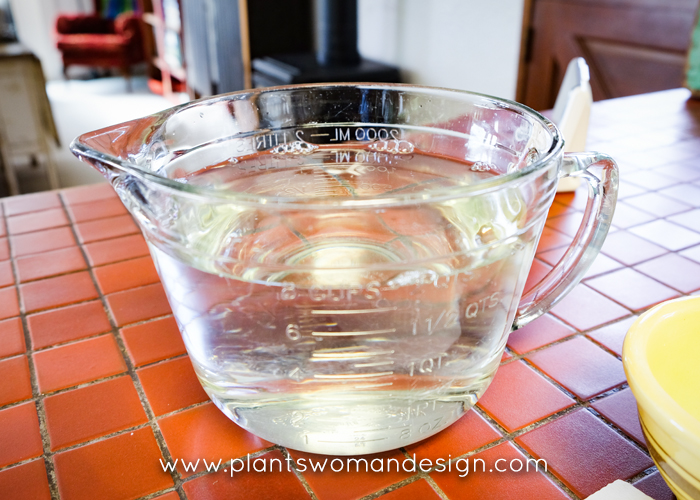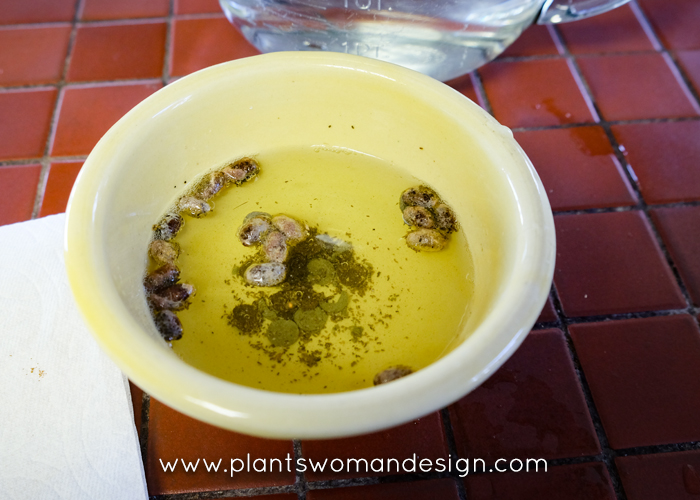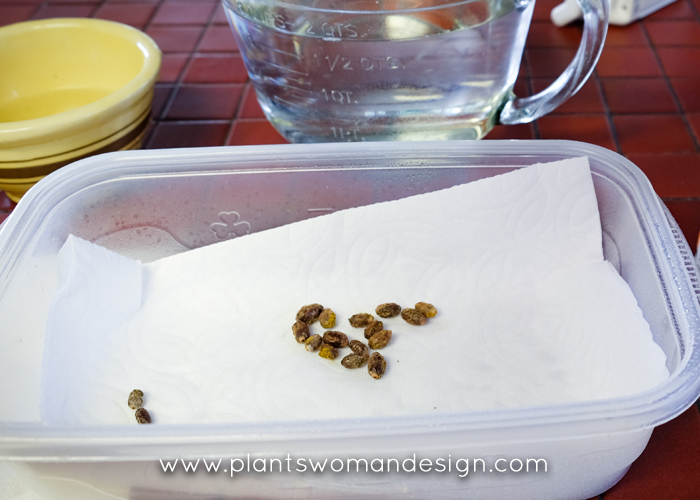It is time once again to harvest the Mason Bees. One of my bee houses is full this year, the other one not so much. I’m wondering if birds helped themselves to the cocoons before they had a chance to hatch out.
Last year I harvested about 100 bees. I gave some to my sister as her Christmas gift and put the rest back in the garden. The location near the vegetable garden was full of bees but the one by the apple tree was mostly empty. That is not to say there was no pollination. My apple trees were amazing this year.
Here are the things I observed this year.
Mason Bees will live in the bee houses but also in the ground. There is a sandy area by one of the vegetable beds that had many bees going in and out of all season long. They had created their own little colony in the ground. Remember these are Mason Bees so they don’t sting and aren’t aggressive.
If you see yellow and black wasps these are not mason bees. Those would be not good to have in a ground nest as they do sting and are aggressive.
My first ever leaf cutter bees. (Megachilidae) I found bees going in the ground by the fountain pulling bits of leaves in with them. This was during July and August. Mason bees are going dormant by then and leaf cutter bees take over. You can purchase leaf cutter bees by mail order or in the nursery to help pollination continue throughout the year.
When I opened up my mason bee tubes I also found some little larvae in with them. They had pollen with them (the food for hatchlings). They are actually leaf cutter bees that have used the mason bee house for a home instead of making one out of leaves. I did not find these bees in the house last year and probably would have thought that they were not supposed to be there.
Cleaning the Cocoons:
Separate the tubes either by splitting the bamboo or unwrapping the paper tube. Carefully pull the cocoons from the tube and put on paper towel.Prepare a solution of water with bleach. I use 1 tsp of bleach per 2 gallons of water.
Drop the cocoons in the water and swish around gently for several minutes. The debris will drop to the bottom and cocoons will be mostly clean. If there is a little pollen (yellow dust) on them I don’t worry about it.
Rinse twice in clean water with about 5 minutes of washing time.
Spread on a paper towel to dry.
Pack into a plastic tray with paper towel under the babies. Mist gently with water and poke some holes in the tray for air circulation.
AS they rest in the refrigerator over the winter (or consistently cool 45 degrees) or shed outside. Mist them occasionally so they don’t dry out.
It is a privilege to share the word about bees that are so important for pollination. Remember: Native bees are 100 times more effective at pollination than honey bees. This makes a big difference in the production of the food we all eat.
Be sure to catch up on our Mason Bee journey by clicking on the blog posts below.
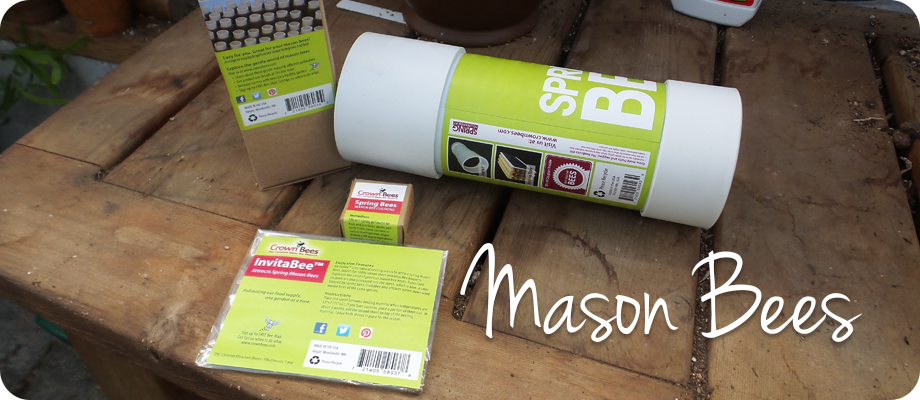
Mason Bees
Back in February we wrote about Mason Bees and the tremendous job they do pollinating the garden. With our warm weather starting early this year I purchased my kit from my local nursery, Valley Nursery, two weeks ago. The guidelines say to wait until it is 53 degrees...

Mason Bee Time
We have had some beautiful spring days..... Oh, wait a minute, it isn't spring, it's only February. I've been busy pruning my apple trees (severely) and watching the buds swell. The rest of the nation is covered in white and we are having 60 degrees and sun. No...
No Results Found
The page you requested could not be found. Try refining your search, or use the navigation above to locate the post.

